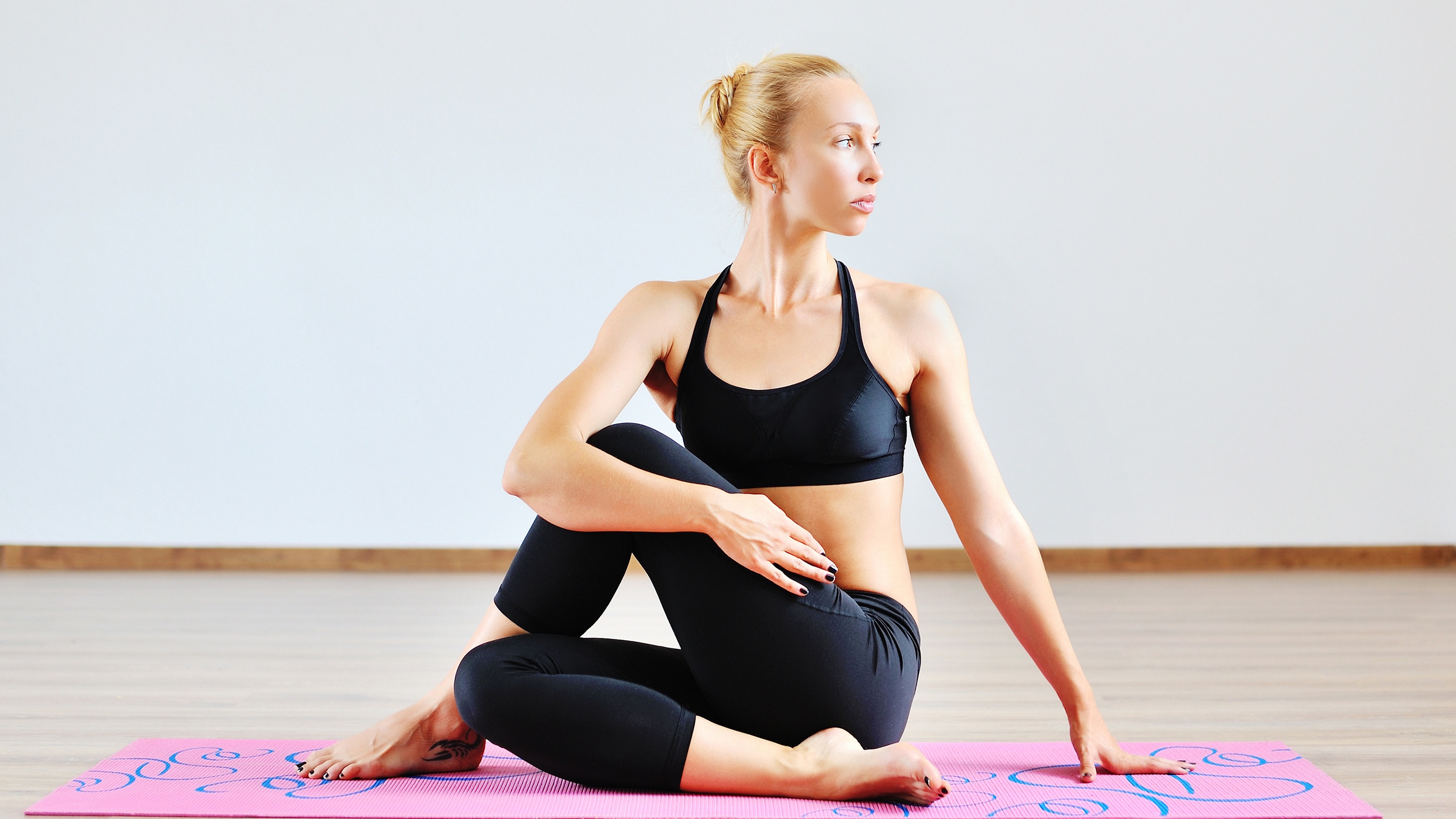From stretching and strengthening to de-stressing, there’s a lot to love about yoga. But its benefits go much deeper than that – in fact, for Chris James, yoga instructor and author of new book Mind Body Cleanse, its effects are as much internal as external.
Alongside mindfulness tips, vegan recipes and juices, Mr James explores how certain yoga poses can help stimulate digestion.
“There are many different poses that can help with your digestion,” says Mr James. “Twists are quite remarkable because they not only massage, tone and rejuvenate your abdominal organs and promote digestion and peristalsis [the movement of food through the digestive tracts], but also improve the suppleness of the diaphragm. The spine also becomes more supple, allowing for correct spacing and alignment. This in turn improves blood flow to the spinal nerves and increases energy levels.”
Read: The health benefits of yoga go beyond the mat
Here are three yoga poses and stretches that could help your digestion.
1. Ardha Matsyendrasana – half lord of the fish

Sit on the floor with your legs straight in front of you, buttocks supported on a folded blanket or block. Slide your left foot under your right leg to the outside of your right hip. Lay the outside of the left leg on the floor. Exhale and twist toward the inside of the right thigh. Press the right hand against the floor just behind your right buttock, and set your left upper arm on the outside of your right thigh near the knee. Pull your front torso and inner right thigh together.
With every inhalation, lift a little more through the sternum, pushing the fingers against the floor to help. Twist a little more with every exhalation. Be sure to distribute the twist evenly throughout the entire length of the spine. Stay for 30 seconds to one minute, then release with an exhalation, return to the starting position, and repeat to the left for the same length of time.
Read: Nine foods to ease your digestion
2. Parivritta Trikonasana – revolving three angle or triangle pose

From standing, turn your left foot in 45-60 degrees to the right and your right foot out to the right 90 degrees. Align the right heel with the left heel. Firm your thighs and turn your right thigh outward, so that the centre of the right kneecap is in line with the centre of the right ankle.
Square your hip points as much as possible with the front edge of your mat. As you bring the left hip around to the right, resist the head of the left thigh bone back and firmly ground the left heel. Draw the left hand and arm as far forward as possible.
With an exhalation, turn your torso further to the right and extend forward over the front leg. Reach your left hand down, either to the floor (inside or outside the foot) or, if the floor’s too far away, onto a block positioned against your inner right foot. Beginners should keep their head in a neutral position, looking straight forward, or look at the floor. More experienced students can turn the head and gaze up at the top thumb.
From the centre of the back, between the shoulder blades, press the arms away from the torso. Bring most of your weight to bear on the back heel and the front hand. Stay in this pose anywhere from 30 seconds to one minute. Exhale, release the twist, and bring your torso back to upright with an inhalation. Repeat for the same length of time with the legs reversed, twisting to the left.
Read: Nine hobbies that will help you live longer
3. Chakravakasana – cat cow pose
Start on your hands and knees, aligning your wrists underneath your shoulders and your knees underneath your hips.
Think of your spine as a straight line connecting the shoulders to the hips. This is the position of a neutral spine. Keep the neck long by looking down and out.
Inhale deeply and drop your belly down to the ground, pressing your hands into the floor and your buttocks out. You should feel a stretch in your lower back. Take your gaze gently up toward the ceiling without forcing your neck and hold for the length of your inhale.
As you begin to exhale, arch your back up as high as you can, stretching like a cat.
Repeat the Cat-Cow Stretch on each inhale and exhale, matching the movement to your own breath.
Continue for five to 10 breaths, moving the whole spine. After your final exhale, come back to a neutral spine.
This position is beneficial because as you continue to alternate between the two stretches, the compression and lengthening of your body massages the intestines and brings bloods to your cells in the abdominal area.
If you have any existing health problems or injuries, remember to always seek professional advice before embarking on any new exercise regime.
– With PA
If you enjoy our content, don’t keep it to yourself. Share our free eNews with your friends and encourage them to sign up.

